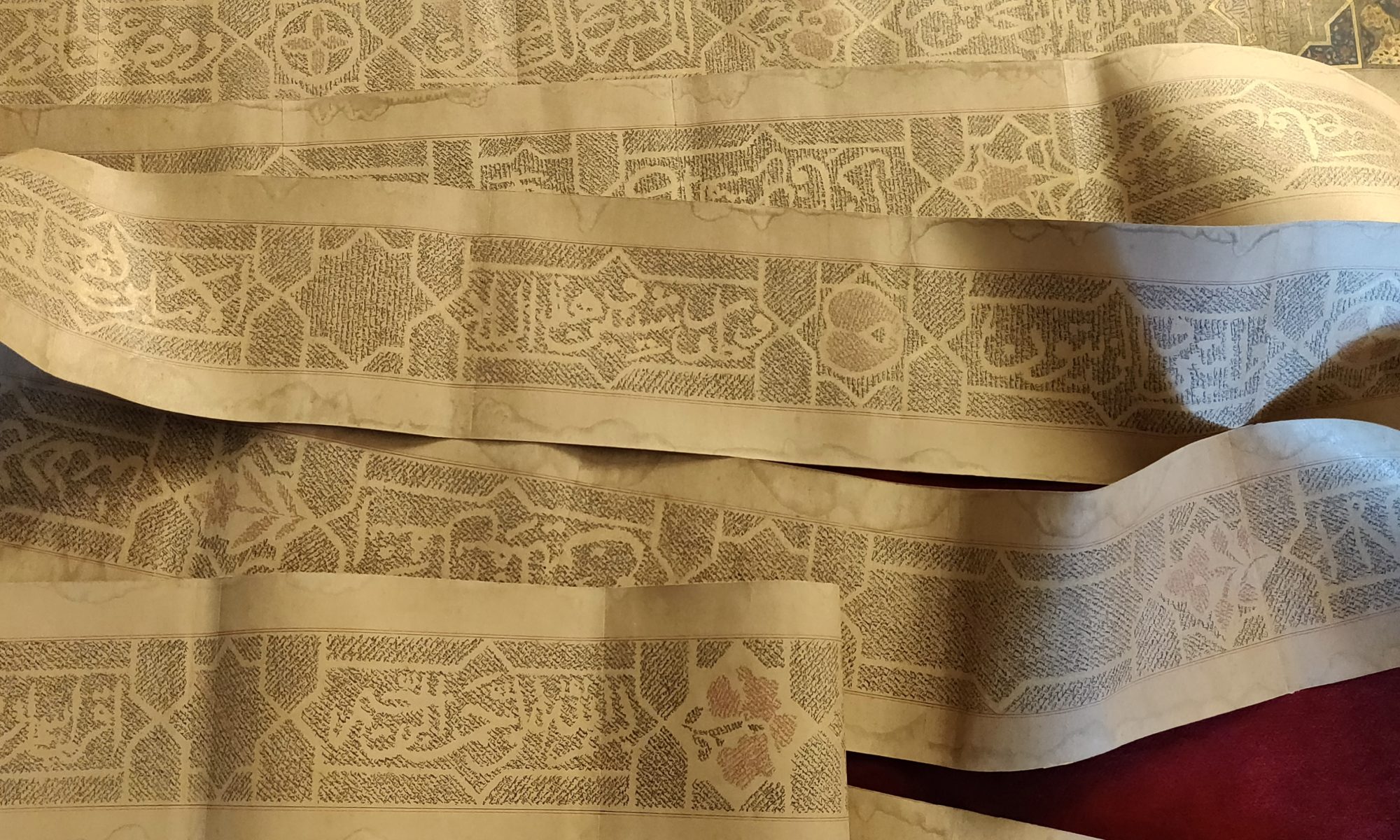Title: Futuh Ash-Shaam | فتوح الشام
Author: Presumed to be Muhammad bin ‘Umar bin Waaqid as-Sahmi al-Aslami, Al-Madani, Abu ‘Abdillah Al-Waaqidi (d. 207H) | محمد بن عمر بن واقد السهمي الأسلمي بالولاء، المدني، أبو عبد الله، الواقدي
Scribe: Unknown | مجهول
Date: Unknown | مجهول,
Script: Naskh
Size: 23.5 X 15.5 CM
Folios: 13ff.
Description: 20 Lines/Page | European Laid Paper with watermark [mostly cut off in center]: Appears to to starts within a shield and a crown atop (?) | Black ink, Ta’qeebat bottom left of recto and some pagination (possibly added later)|Part of Volume 3: “ذكر فتح البهنسا وما فيه من الفضائل وما وقع فيه للصحابة رضي الله عنهم” and it has numerous variation with the published version.
Incipit: وهذه قصيدة خالد بن الوليد رضي الله عنه المتعلقة بهذا الكلام وهي هذه شعر:
Explicit: وقال الأمان يا خالد فقال له خالد: يا كلب النصرانية لا يعطى الأمان إلا لأهل الأمان أنت رجل أردت أن تمكر والله خير الماكرين
Provenance: Private Family Collection of a Medical Director at a Lebanese Hospital
Research Notes: There is a much debate as to whether this book is authentically ascribed to Al-Waaqidi. It is known that Al-Waaqidi authored a book called Futuh Ash-Shaam, but whether or not the published version is the same work is in doubt. The text of this manuscript resembles the published work of Futuh ash-Shaam ascribed to Al-Waaqidi, except that there are substantial parts missing and various differences with the published book. In his book, “At-Tareeq Ilaa Dimashq, Dar an-Nafa’is print, 1990”, Ahmad ‘Adil Kamal (Pg. 77 to 78) mentions that he investigated three publications of this work: The Dar al Jeel print from Beirut, the Halabi print from Egypt (from 1966), and the Calcutta print with the checking of the Irish Orientalist, William Nassaulees, from 1854 (This was based on two manuscripts that differed widely from each other). Ahmad Kamal noted that William Nassaulees stated that the manuscripts of Futuh Ash-Shaam were rare with only about 10 manuscripts in European libraries with the following dates: 773H, 815H, 827H, 863H, 952, 994H, and 1009H. Interestingly enough, Ahmad Kamal mentioned that William Nassaulees wasn’t able to properly perform Tahqeeq with the differences in the manuscripts and he concluded with a work that was biased towards the Christians- such that he found parts in the Calcutta print (by Nassaulees) that were not found in the other publications (pg. 78). Ahmad Kamal also mentioned that the narrations from well-known scholars and historians citing Al-Waqidi has differences in what is recorded solely in Futuh ash Shaam, casting doubt as to whether this current work is actually the same as Al-Waqidi’s Futuh Ash-Shaam (pg. 80). He also questions whether or not Al-Waqidi even authored a book called Futuh ash-Shaam. | There is a similar looking manuscript in the King Saud University Library ( 953.02 / ف و) that is estimated to be from the 13th Century Hijri.; There was an extant 16th century (CE) copy on sale at Christie’s Indian & Islamic Art & Textiles April 11th Sale (Lot 248) that was unsold in the auction.
Accession #: Ms.105ff

